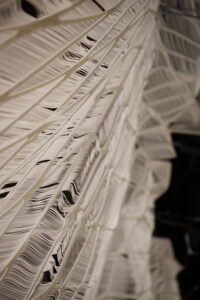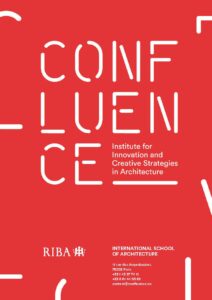
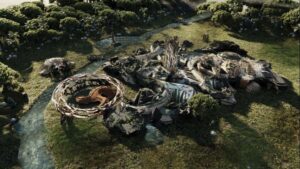
.
Diploma: Mineral Grafting by Charles Edgard-Lincoln
Tutor: Lionel Lemire
Diploma: Thinking upside down by Jhila Prentis
Tutor: Lionel Lemire
Studio: Metaphasis by Emma Miglietta
Tutor: Colin Fournier
Diploma: Soft Tectonic by Domitille Roy
Tutor: Odile Decq
Studio: Los A(I)ngeles by Lorenz Kleeman
Tutor: Colin Fournier
Studio: Parametric Participatory City by Aiden Newsome
Tutor: Odile Decq
Workshop: Common skin by Anastasia Kublashvili and Louis Bouvrande
Tutor: Didier Faustino
Workshop: Between Limits group project
Tutor: Edouard Cabay and Paco Pioline
.
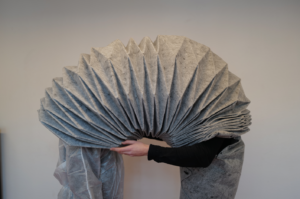
The instructions in the brain are translated into nerve signals to drive the hand muscles, and the hand muscle movements are again translated into electrical signals for input into the machine. The movement of the machine again generates signals through our eyes and transmits them to the brain, and the brain makes adjustments and the cycle repeats.
Fast or slow, this series of translations constitutes the communication between man and machine. The stronger this communication, the more the machine tends to become part of the human body.
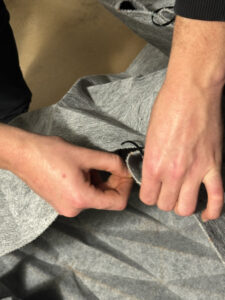
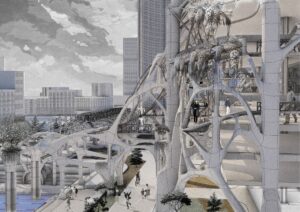
As an alternative strategy to the renovation of the Montparnasse center in Paris, this project explores the morphological potentials of stone structures rising from the existing multilayer ground infrastructure on site in order to create spatial interconnections between the street, the envelope, and the existing buildings. In this rehabilitation, the site is converted in order to integrate the existing infrastructure, and the surrounding context through the growth of a connective multilayer architecture.
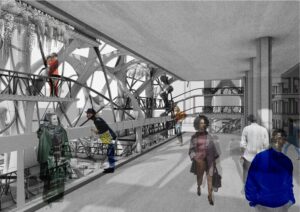
PART 1 AND PART 2 UNCONDITIONALLY REVALIDATED!
THANK YOU TO RIBA
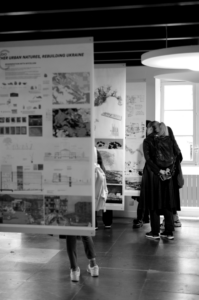
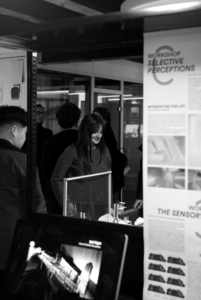
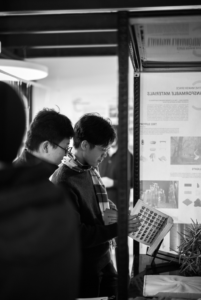
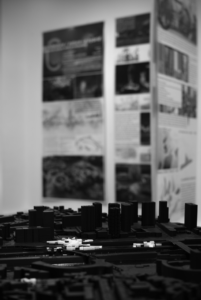
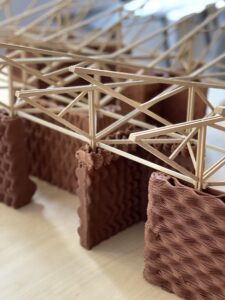
The project explores the innovative technique of 3D clay printing within the construction industry, blending digital design and ancient materials like clay to revolutionize architectural possibilities. This method promises efficiency through minimal waste, rapid construction, and automated processes. The process starts with creating a parametric design digitally, followed by prototyping to refine factors such as material liquidity, air pressure, and layer spacing. Through iterative testing, the project enhances control over the design and printing process, culminating in the construction of a model with a timber roof and multiple supporting walls. This exploration not only optimizes construction techniques but also expands design potential in architecture.
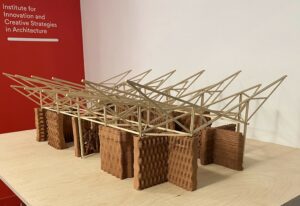
This semester, Juan Velasquez, an architect professor at CONFLUENCE, is leading two workshops, one at CONFLUENCE and another in Colombia in partnership with Exkema.
Exkema is an initiative that was conceived and established in 2004. Convinced of the imperative to generate positive and constructive changes in the field of architecture, the founders of Exkema embarked on a constant quest for innovation. Their unwavering belief in the transformative power of architecture has been the driving force that has guided them throughout their journey.
From its inception, Exkema has endeavored to be at the forefront of the industry. This relentless pursuit of novelty has led them to nurture creativity and explore new opportunities. Each project undertaken by Exkema is a reflection of their commitment to originality and excellence. By combining traditional expertise with innovative approaches, Exkema has pushed the boundaries of architectural design, creating spaces that exceed expectations.
Over the years, Exkema has established strong partnerships with professionals from various backgrounds, allowing them to diversify their areas of expertise. By collaborating with experts from different disciplines, Exkema has approached projects from multiple angles, integrating ideas from diverse sectors to enrich their creations.
At the core of Exkema’s mission lies a commitment to social and environmental innovation. In addition to pushing the boundaries of architectural design, Exkema constantly strives to create sustainable and eco-friendly spaces. Awareness of the importance of ecology guides every decision they make, from the choice of materials to the implementation of environmentally friendly technologies.
Thus, Exkema continues to stand out as a pioneer in contemporary architecture. Their legacy of innovation and excellence endures, shaping the future of the architecture industry and inspiring future generations to rethink the spaces of tomorrow.
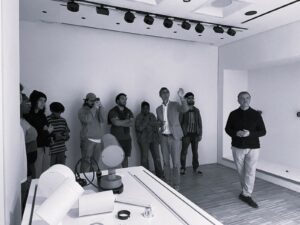

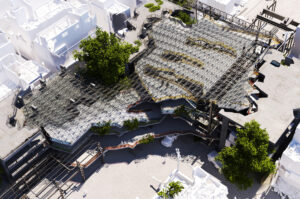
This project imagines a temporary structure being able to evolve over time and adapt to the use of people, where events centered on exchange and interaction would give life to a community-based social scene and help re-establish the city’s identity through the very people that inhabit it. The wounds caused by the war, visible on the urban fabric of the city, would be the starting point: what would normally be hidden and constructed upon, becomes instead the statement of a landmark that bridges future possibilities with the memory of what happened; taking from the negative volume of the destruction, a new place takes shape, where flexibility and experimentation can happen.
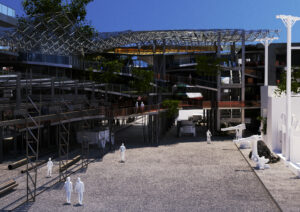
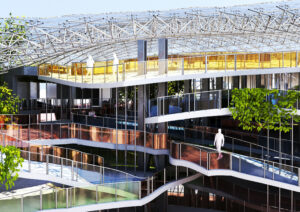
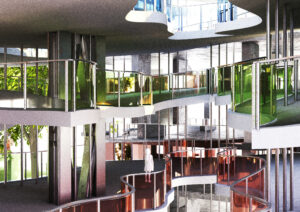
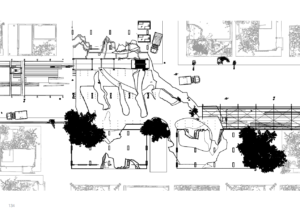
Igor Siddiqui (b. 1974 in Rijeka, Croatia) is an architect and associate professor at the University of Texas at Austin. He has served as a full-time faculty member at the School of Architecture since 2009, where he currently holds the Gene Edward Mikeska Endowed Chair for Design. Siddiqui’s practice, teaching, and research explore the relationship between design innovation and public engagement. He current projects examine the status of the interior in architecture and as a space of artistic collaboration.
Siddiqui frequently works with cultural organizations that support public art initiatives and projects. His work has been published and exhibited throughout the US and internationally. Siddiqui received his Master of Architecture from Yale University and a Bachelor of Architecture from Tulane University in New Orleans. He previously taught at the University of Pennsylvania, Parsons School of Design, and California College of the Arts and has a visiting professor at ENSA—Paris-Belleville and the Cranbrook Academy.
The lecture presents in-progress research centered on Claude Parent’s temporary installations—les praticables—designed between 1969 and 1975.
The purpose of these projects was to test Parent’s theory of the oblique function through public engagement and collaboration. Some of the designs were built, others are only known through existing models and drawings, and some are barely documented at all. Based on fragment of archival materials, nine of the installation designs are reconstructed through new digital drawings and models. As such, they can be examined not only individually but also as a series of design iterations that form a cohesive body of work, responsive to varying contexts and inextricably linked to the accompanying activities, artefacts, and narratives without which our understanding of them is incomplete. Fifty year later, these projects inspire new possibilities for conceptualizing design practice within and beyond architecture.
For several years he has been developing a photographic work that explores space and architecture as much as the medium itself.
He tries to record the real in a form of objectivity, reporting, by the frontality of his framings, a statement of the photographed places, as markings of history, politics and society, and as mental configuration.
His, is part of the history of documentary photography but alsoin a place that shows that the tool is never transparent, and that its own qualities, light and framings participate in the organization of this recorded reality.
CONFLUENCE invites Eric AUPOL for exploring new ways to express space and his perception of reality.
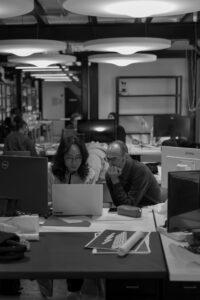
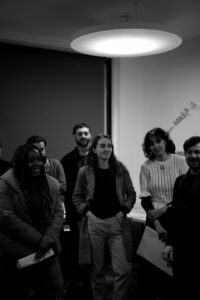
Mathieu BONARDET
Graduated from the Beaux-Arts of Paris in 2013, Mathieu BONARDET lives and work in Paris. He brings the drawing to other fields than what is defined by the space of the street.
His practice first led him to filmer or photographies actions before direction it to the volume.
Since then, his work has oscillated between drawing and sculpture which feed off each other and on graphite, answers steel.
After the closure of the Jean Brolly gallery, with which he collaborated for 7 years, he joined the ETC gallery in Paris.
CONFLUENCE invites Mathieu BONARDET for his mindset and pushing the limits of the drawing through materiality and space.
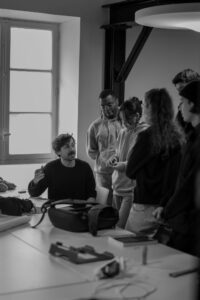
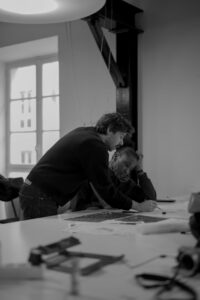
Mathieu BONARDET:
In Mathieu Bonardet’s work, draftsmanship centers around primary physical
action and material: drawing lines with graphite. These repetitive lines are
both corporeal and temporal inscriptions of the artist’s gesture. The tension
generated between two given elements – attraction, rejection, rupture,
distance, disparity – nourishes Bonardet’s work and gives body to his diptychs.
His drawing practice goes far beyond the confines of a sheet of paper: first
with filmed performance or photographic documentation of actions (notably
the photographic series Ligne(s), 2011 featured on the cover of Roven
in 2014, and later shown in the König gallery in Berlin in 2017, or Fracture II,
2015 acquisitioned by the FRAC Normandie Rouen) then moving to a three
dimensional practice. His work now moves between sculpture and drawing,
one nourishing the other, as graphite responds to steel and vice versa.
After the closing of the galerie Jean Brolly where Bonardet was represented
for over seven years, he now joins the galerie ETC.
For several years, I have been developing photographic work that explores space and architecture as much as the medium itself. I try to record reality in a form of objectivity, reporting, through the frontality of my framing, an observation of the places photographed, as markers of history, politics and society, and as mental configurations.
My work, which I will present during this conference, is part of the history of documentary photography, but also in a space which shows that the tool is never transparent, and that its own qualities, light and framing, participate in the organization of this recorded reality.
Eric Aupol:
Born in 1969 and based in Paris, Éric Aupol became known for his photographs relating to places and spaces as markings of History and as mental configurations. The expanses of the landscape, the constrictions of private or collective habitats, the details of objects, bodies and faces are approached in the quest for a visual writing where the sensitive and the intelligible would cease to oppose each other.
The margin, both historical, political and aesthetic, crosses at different levels of revelation the whole of his photographic corpus, questioning the spaces visited as much as the photographic medium, playing with what is obstructed and revealed to the gaze in the real, palimpsest of a leafing through of memories and history.
Winner of the Villa Medici outside the walls in 2009, represented by the Polaris gallery in Paris, he teaches photography at the National School of Art in Bourges, and intervenes in various art schools, in the form of workshops and conferences (ENSP Arles, ENSCI Paris, International Academy of Art Ramallah, University of Shanghai,…)
His work is present in many public and private collections, in France and abroad (National Library, European House of Photography, Heidelberg Museum, Erasmus University of Rotterdam,…)
CONFLUENCE is proud to be part of the STEM IS FEM movement.
STEM IS FEM is an educational project that promotes STEM specialties, science, technology, engineering and mathematics, among Ukrainian high school girls.
https://stemisfem.org/en/pro-proekt
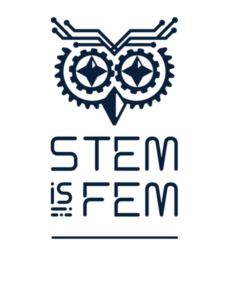
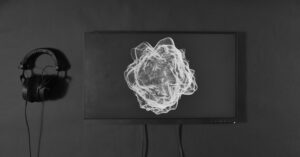
REDS
Student: Emma Miglietta
Tutor: Nathalie Junod Ponsard
altering the perception of the space through the emotional duality of red light and the two-dimensionality
that its shadow create.
Site: Arènes de Lutèce (2nd century CE), 49 rue Monge, 75005 Paris 53 x 47 m
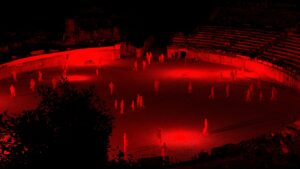
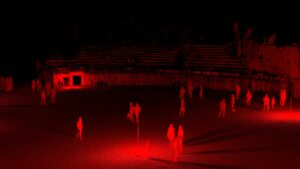
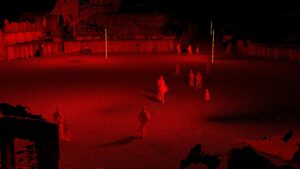
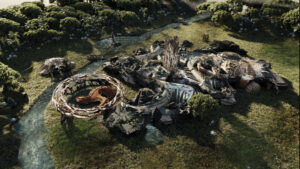
Lucia Landivar’s thesis, “Architecture / Nature – A Hybrid,” presents a revolutionary approach to architectural design, merging natural elements with modern construction methods. This concept is demonstrated through a detailed exploration of sustainable materials and innovative structural solutions that integrate the natural environment into urban settings. Lucia emphasizes the use of bioplastics, bamboo, and mycelium-based concrete to reduce the ecological footprint of buildings while enhancing their aesthetic and functional qualities. Her work challenges traditional architectural paradigms by proposing designs that are both environmentally responsible and adaptable to changing urban landscapes, advocating for a future where architecture and nature coexist harmoniously.
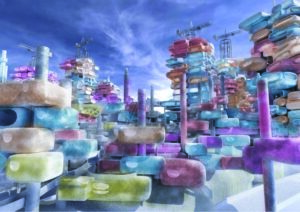
Amid rising political and environmental instability, we need resilient structures that adapt to changing circumstances such as pandemics, extreme weather, and shifting aesthetic trends, without gentrifying existing areas. As climate change renders rural regions less habitable, pushing populations towards cities, Los Angeles is projected to densify significantly. By 2070, its population could reach around 26 million, leading to the formation of high-density sub-centers within the metropolitan area. I envision AI-managed structures that develop a form of consciousness, enabling rapid adaptation based on real-time data. These self-sustaining habitats, complete with automated factories and distribution systems, can expand, contract, and repurpose themselves as necessary, efficiently utilizing available space.
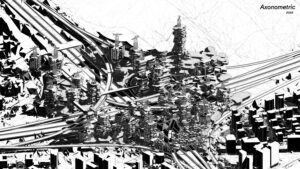
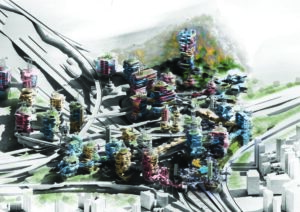
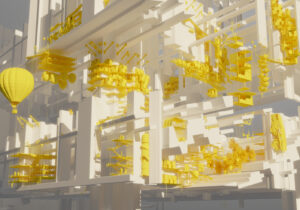
The instinct of the individual is an inseparable aspect of each of us. This aspect of our beings, sometimes considered a defect, conditions and directs our activities. It is such notions that distinguish us from the machine.
Since the 1990s, the advent of the internet and the automation of certain tasks by technology have improved our daily lives but also dehumanized and increasingly fragmented our relationship with others. The globalization of resources, technologies and labor is becoming more and more embedded in our systems of societies wherever we are. Exchanges, faster, information, instantaneous.
-Hasn’t the city become a monster-machine?, always eager for maintenance, improvements, resources and manpower?
In a way, would we no longer live for city systems, rather than through them?
The observation of our ways of living in this extremely complex environment system, brings to light a fundamental and haunting question: What is the part of the instinct of the individual in the course of the city?
Through nonsense abstract mechanics, I confront reality with questions about the qualification and identity of today’s space by giving free rein to the appropriation of space and its function.
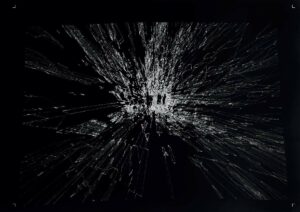
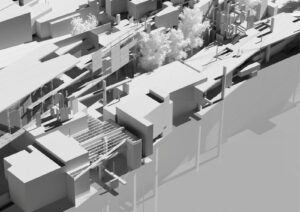
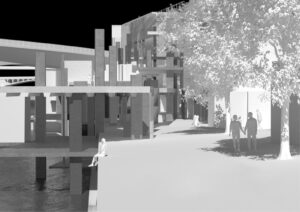
In March 2022, Confluence Institute and the Kharkiv School of Architecture were going to organize a joint workshop…
We support our friends from Kharkiv and Ukraine and pass on the words of Oleg Drozdov, founder of the architectural bureau Drozdov&Partners and co-founder of the Kharkiv School of Architecture:
“My dear foreign friends. Thank you very much for your support. We need your help. You can convince your governments to close the skies over Ukraine by organizing mass protests in your states. We would be grateful if you could support our army by donating it. . Our army fights for our and your freedom”.
https://www.facebook.com/100007928224644/posts/3158442851096625/?d=n
Confluence Institute Fall 2021 Lecture series
November 2, 2021
The gap in architecture between socially centered practice and formally exploratory practice remains, and perhaps is widening. Why are these forms of practice seen as opposed or even mutually exclusive in architecture? Is it possible to design a way of working that engages both areas simultaneously? Moreover, there has not been enough attention given to materiality as a deeply philosophical, inherently social, and formally generative territory for architectural exploration. Material generators can become potential stepping stones along a spectrum of formal and social architecture and help determine the position and self-understanding of the architect. This talk by American architect and Harvard GSD Professor of Practice Jeanne Gang will explore key projects in her practice, Studio Gang, ranging from small community centers and civic buildings to large public parks and museums that share a concern for materiality as a way to engage both social and formal aspects of architecture.
FAIA, est le partenaire fondateur de Studio Gang, un cabinet international d’architecture et de design urbain dont le siège est à Chicago avec des bureaux à Paris, New York et San Francisco. Reconnue pour son approche distinctive qui dépasse les frontières conventionnelles de l’architecture, elle crée des lieux saisissants qui relient les gens à leurs communautés et à l’environnement naturel. Son portefeuille diversifié à travers les Amériques et l’Europe comprend une extension Musée américain d’histoire naturelle; ambassade des États-Unis au Brésil ; et le nouveau Centre de l’Université de Chicago à Paris. Boursière MacArthur et professeure en pratique à la Harvard Graduate School of Design, Jeanne a été nommée l’une des personnes les plus influentes au monde par TIME Magazine. L’édition française de la monographie de son studio, Studio Gang : Architecture, a été publiée cette année.
Life can be easy. We go to school, we study architecture (or whatever crap), we work in an office, we open our own office, we build houses. We get married, start a family and live in our own house. Somehow nice but bourgeois and unrealistic! Life changes. We live in a complex world. Humanity faces great challenges: climate change, unequal distribution of wealth, social division, inequalities and political emergencies, uncertain futures, economic transformations and social changes. Politics is overwhelmed and the narrative of the future has seemingly been abolished. Act instead of react! Can architecture help us?
Benedikt Hartl est un architecte allemand. Ses projets étudient la relation complexe entre l’architecture et les processus d’émancipation socio-politique. Au cours des dernières années, son travail a reçu une large reconnaissance internationale avec des publications dans plus de 100 pays. Il expose et donne des conférences tant au niveau national qu’international.
Bureau d’en face est un studio d’architecture primé à Munich, en Allemagne. Il a été fondée en 2017 par Benedikt Hartl. Opposite Office dessine, écrit, imagine et construit des histoires architecturales. En créant des solutions spatiales aux problèmes sociaux et politiques, Opposite Office s’engage dans les champs de l’architecture, de la société et de ses interfaces. Leurs projets traversent les registres théoriques et militants pour créer de nouvelles formes de travail architectural par des interventions critiques. Opposite Office travaille à travers l’architecture et son refus. La pratique spatiale militante est fondée sur la recherche de contextes publics, culturels et politiques. L’œuvre se niche entre réalité et fiction. Opposite Office cherche à réimaginer et à repenser l’architecture dans le cadre de sa mission sociale et spatiale. La pratique engagée politiquement et socialement, contribue aux questionnements et enjeux de société. Le travail a été publié et largement exposé dans plus de 100 pays.
There are many examples of experimental architecture, but it is the city itself that we most yearn to change. Yet, despite its dysfunctions, the city evolves very slowly. It is a meme that got stuck and continues to exert its fascination. The changes that do take place occur unintentionally. Like mutations in nature, they happen by chance, accidentally., outside the realm of volition. The internal combustion engine, the human invention that has had the greatest impact on forming the contemporary city and making it what it is, both suburbia and skyscrapers, was certainly not created with the deliberate intention of reshaping the world we live in. This was an accidental by-product. The giraffe does not have a long neck because it decided to, but because of chance mutations that proved to be helpful for reaching high leaves. Are such radical mutations already taking place in the city? If so, how can we identify them and possibly facilitate them?
Educated at the Architectural Association (AA) London, from which he graduated in 1969 (AA Dipl. Hons), where he was Diploma School Unit Master from 1970 to 1974. He is Emeritus Professor of Architecture and Urbanism at the Bartlett School of Architecture, University College London (UCL), where he was Director of Diploma Unit 18 and of the Master of Architecture course in Urban Design. He was visiting Professor at the University of Innsbruck (Studio 3 for experimental architecture), the Chinese University of Hong Kong (CUHK), the National University of Singapore (NUS), the University of Auckland, etc.
He was an associate of Archigram Architects in London and Planning Director of the Ralph M. Parsons Company in Pasadena, California, USA, responsible for major planning projects in the Middle East, in particular the new town of Yanbu in Saudi Arabia. He was Bernard Tschumi’s partner on the Parc de la Villette project in Paris and co-author, with Sir Peter Cook, of the Graz Kunsthaus, a contemporary art museum in Austria (2003). His “Open Cinema” project was realised in Guimarães, Portugal (2012), Lisbon (2013) and Hong Kong (2016).
He was Chief Curator of the 2013-2014 Urbanism and Architecture Bi-city Biennale for Hong Kong and Shenzhen (UABB*HK), responsible for the Hong Kong section of the Biennale, for which he chose the theme of “The ideal city”. He was approached by the Shenzhen side of the same Biennale as a curator for 2020-2021, with the theme of “The uncertain city”, aborted due to Covid 19.
He is a founding member of The Daylight Academy (DLA), based in Zürich, and currently engaged in a research project on chronobiology, circadian rhythms and daylight in architecture.
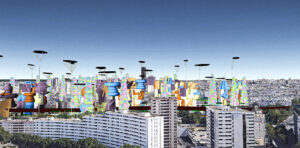
The role of the architect would be, in this scenario, to design the skeleton or masterplan. Every architectural element in the scene is simply a bounding geometry or volume. It can be broken down into points. The objects that would populate these points would be designed by the people or a group of people from the community. This could be done by hand, through software, or in realtime using thoughts and emotions through a Brain-Computer Interface. The result is a collage of objects uniting to create the final product. The software helps organize the pieces, create connections, orient them, and connect systems in an environmentally friendly way.

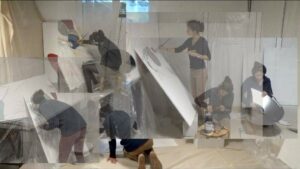
Jhila Prentis examines the issue of migration and its impacts on societies and individuals. Through a series of reflections and examples, the author discusses the challenges faced by refugees and asylum seekers, including administrative difficulties in France and precarious living conditions in camps. It highlights feelings of sadness and injustice experienced in response to migrants’ distress. Jhila Prentis criticizes the inadequate and often inhumane responses of host societies, while calling for awareness and a radical change in the approach to migration and integration.
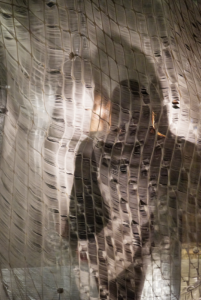
This Diploma work investigates integrating textile technologies in architecture to create responsive, dynamic spaces. It explores textiles’ role in the architectural fabrication process, utilizing digital tools and additive manufacturing. This involves experimenting with textile flexibility, strength, and its potential as a constructive element through various tests and practical applications. The research is framed within a hybrid theoretical and practice-based approach, pushing the boundaries of traditional architectural methods and concepts. Key case studies include developing permeable structures that adapt to changing environmental and social conditions. The outcome emphasizes textiles not just as materials but as integral, functional elements in building environments that are constantly evolving and adapting.
